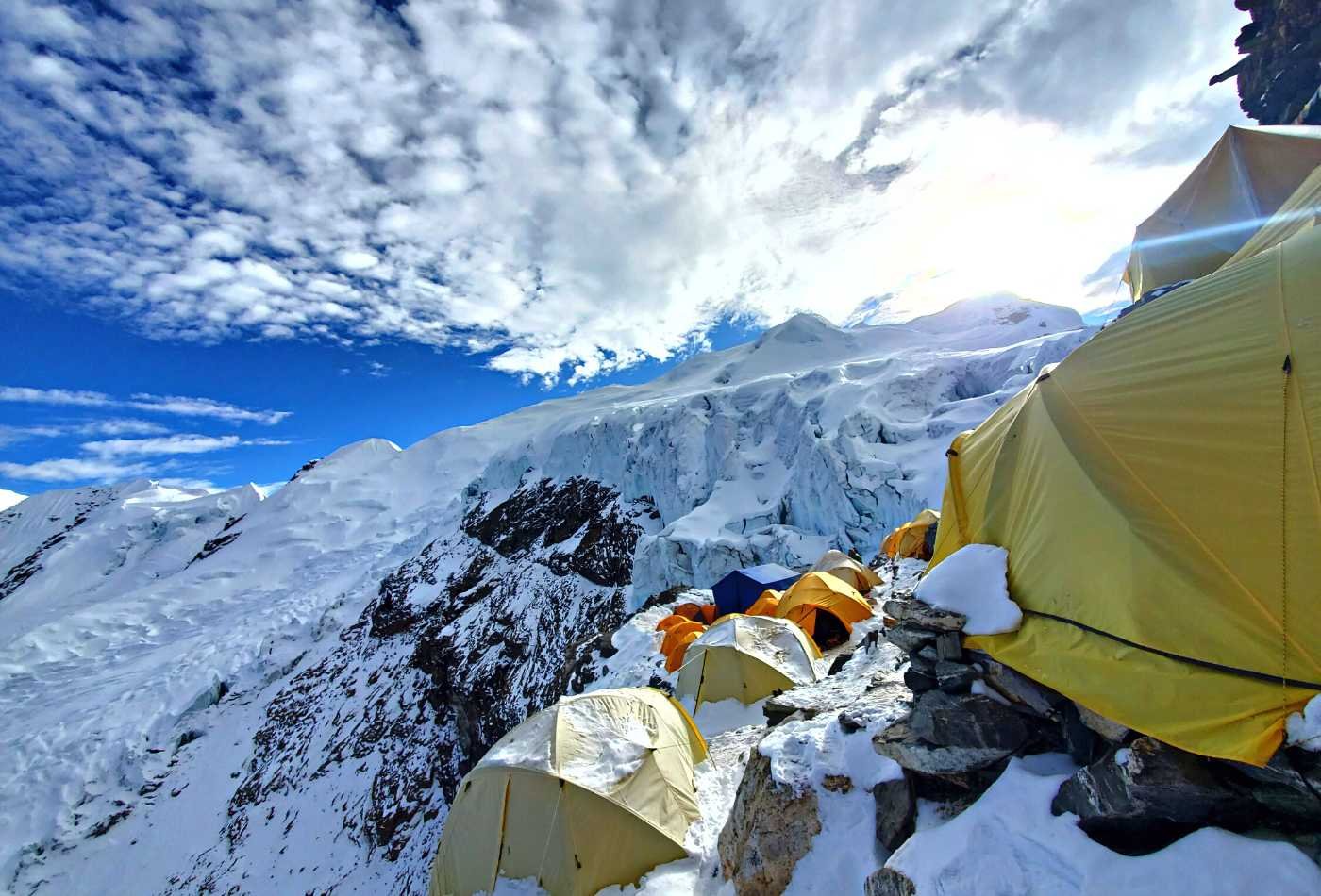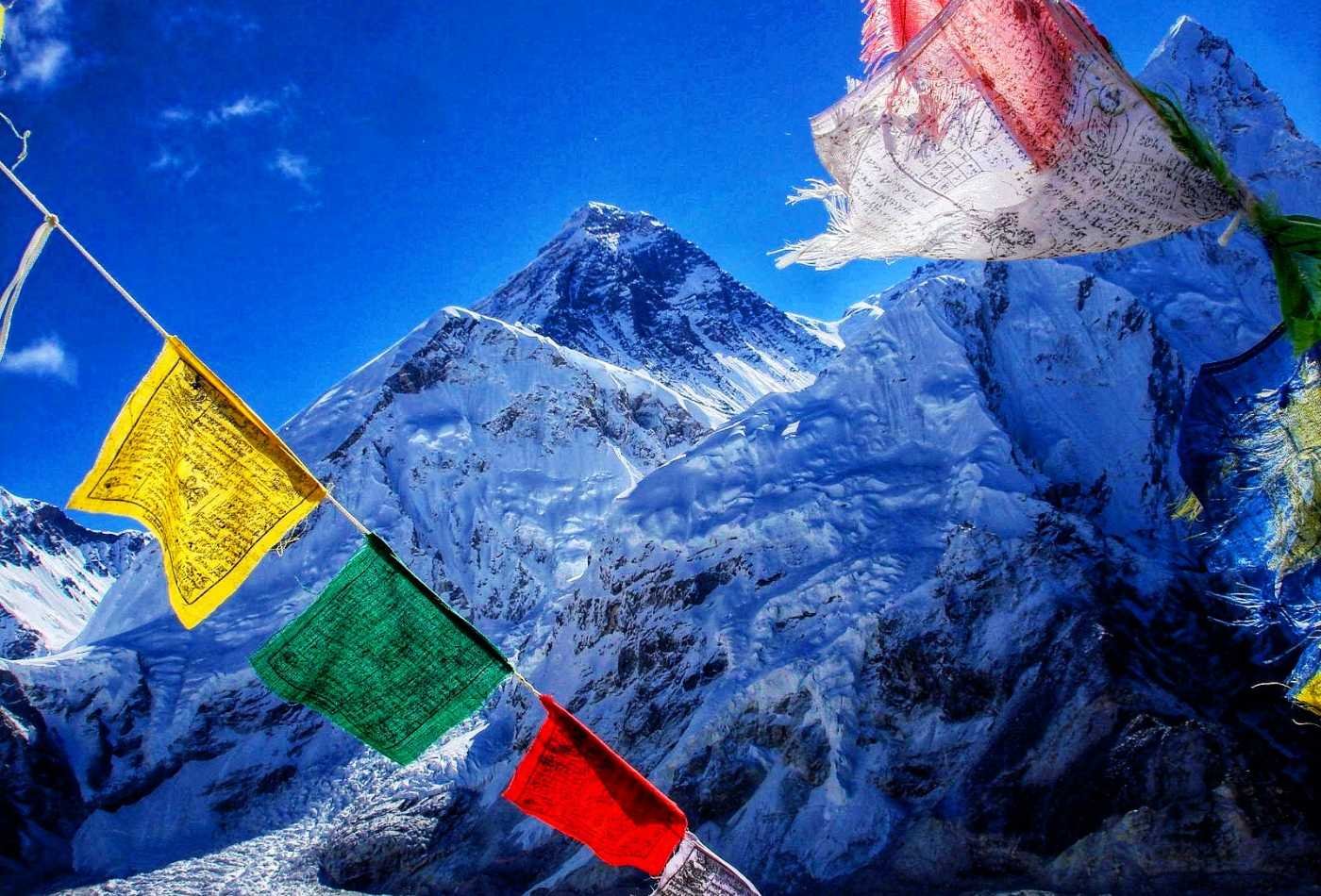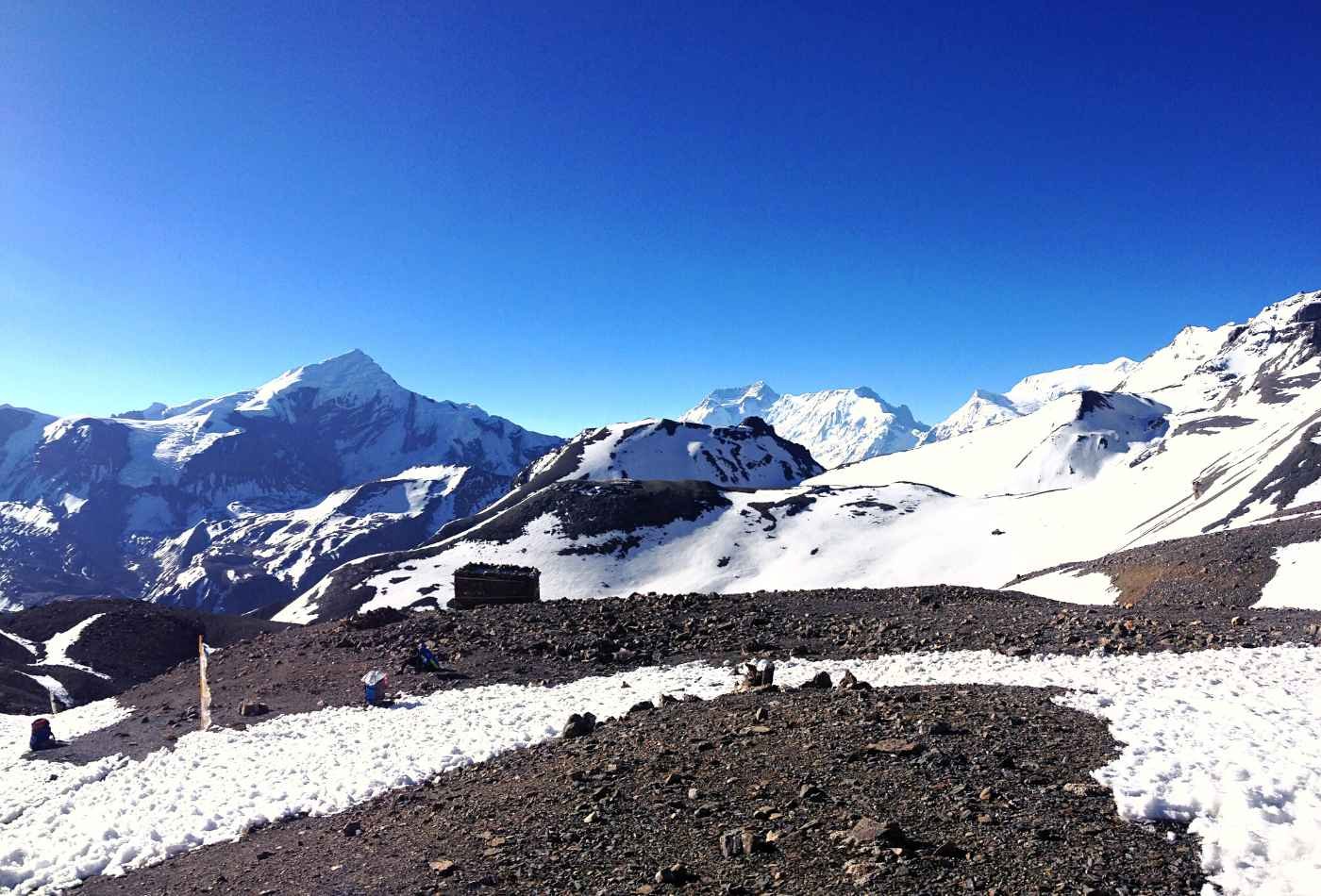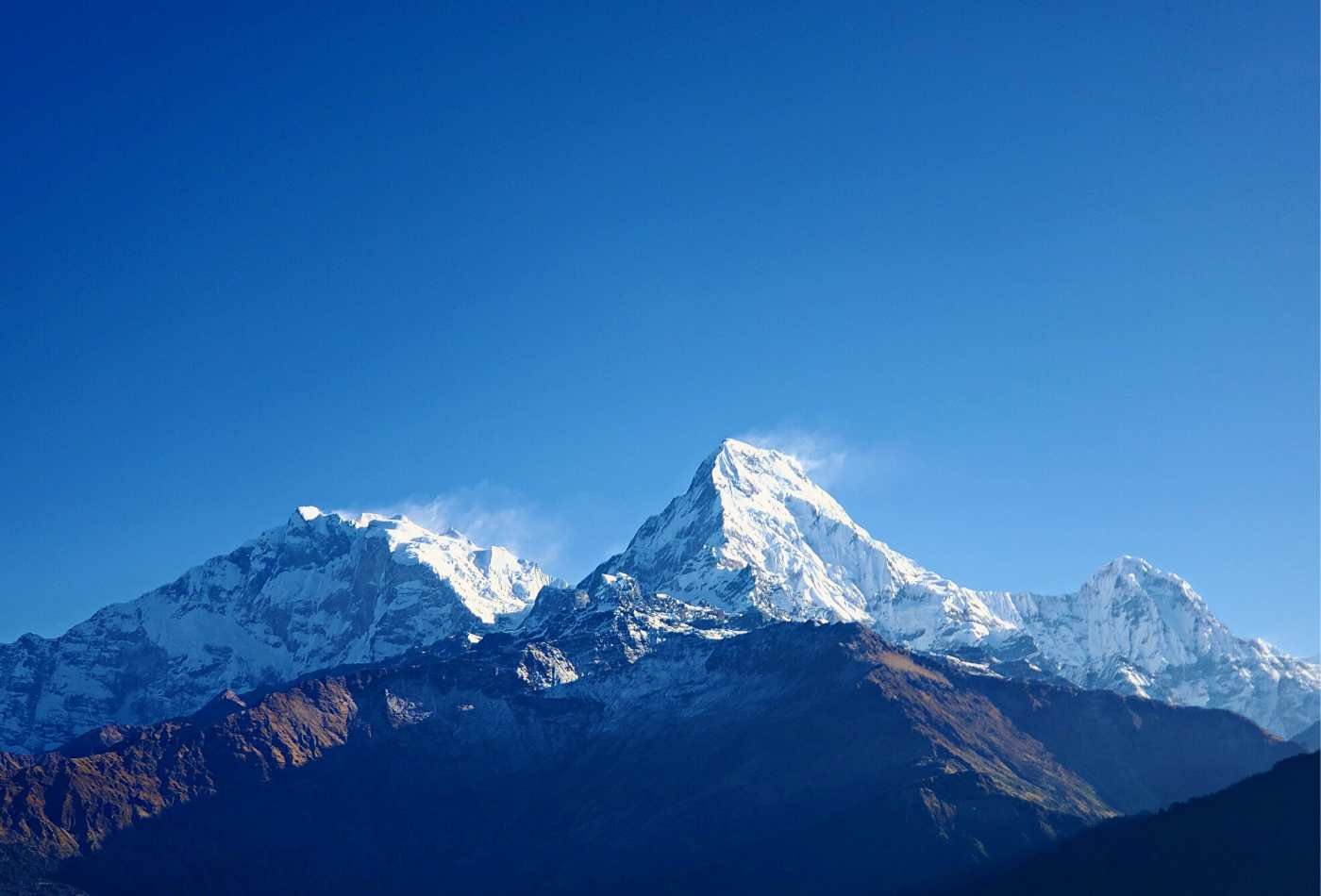
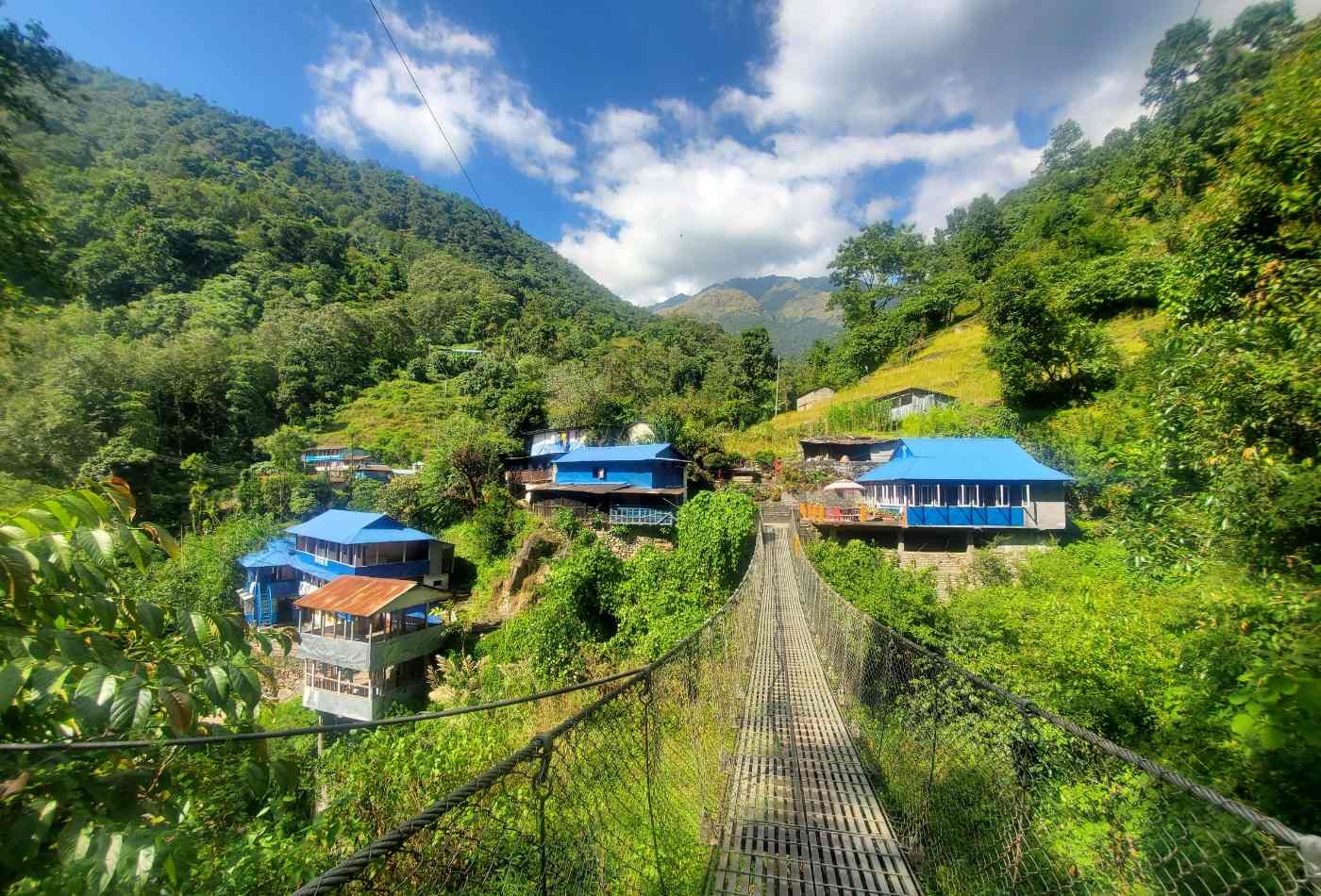
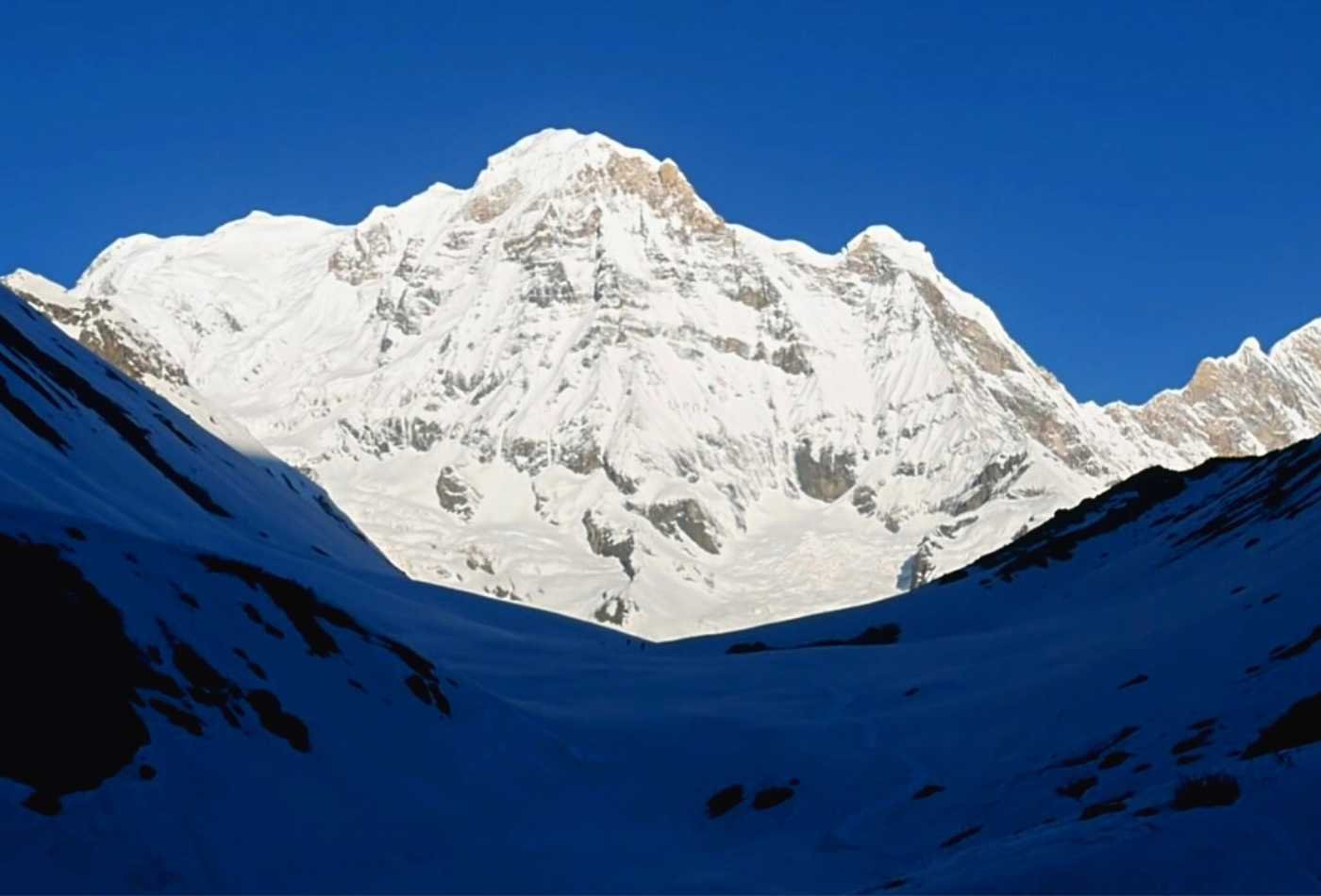
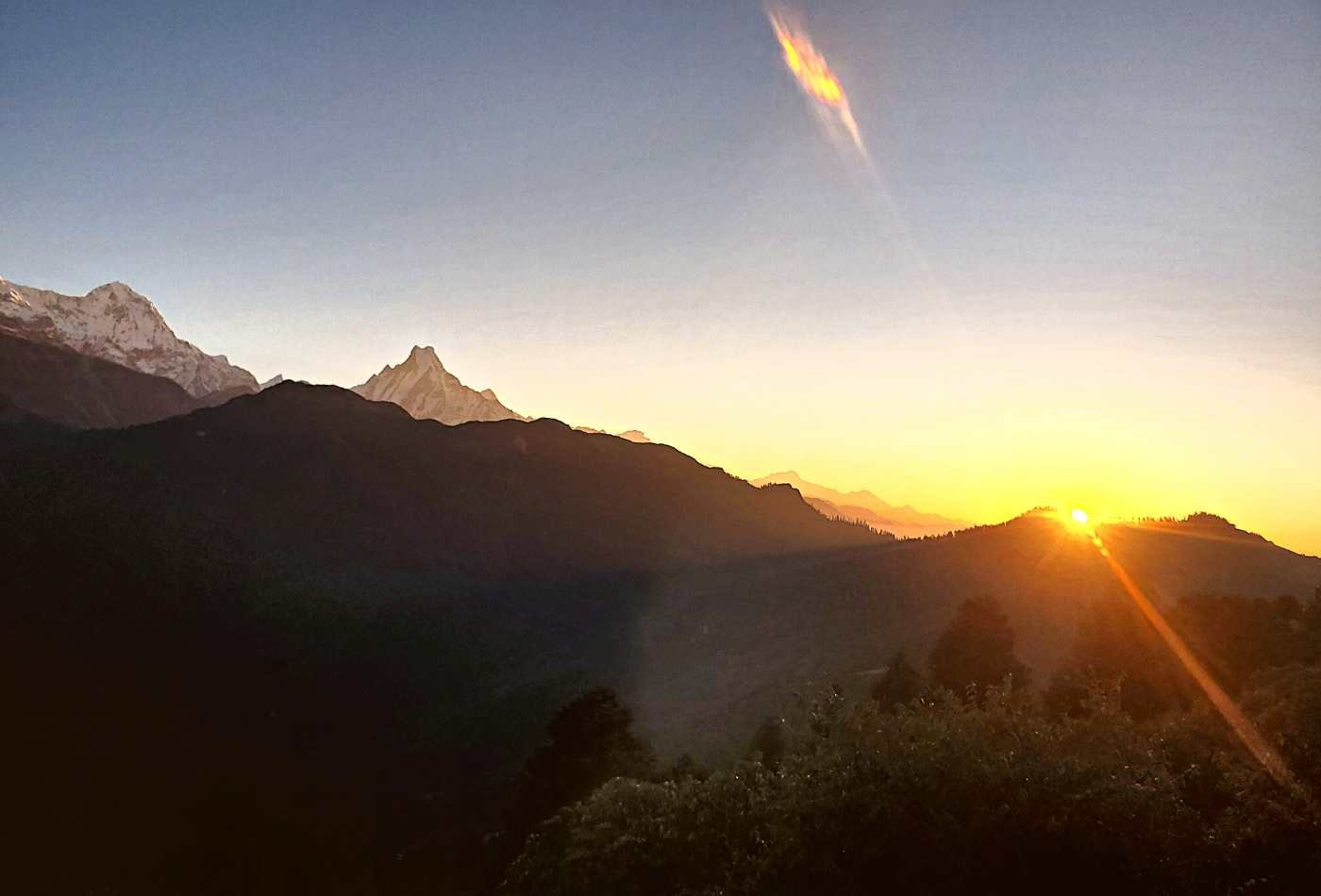
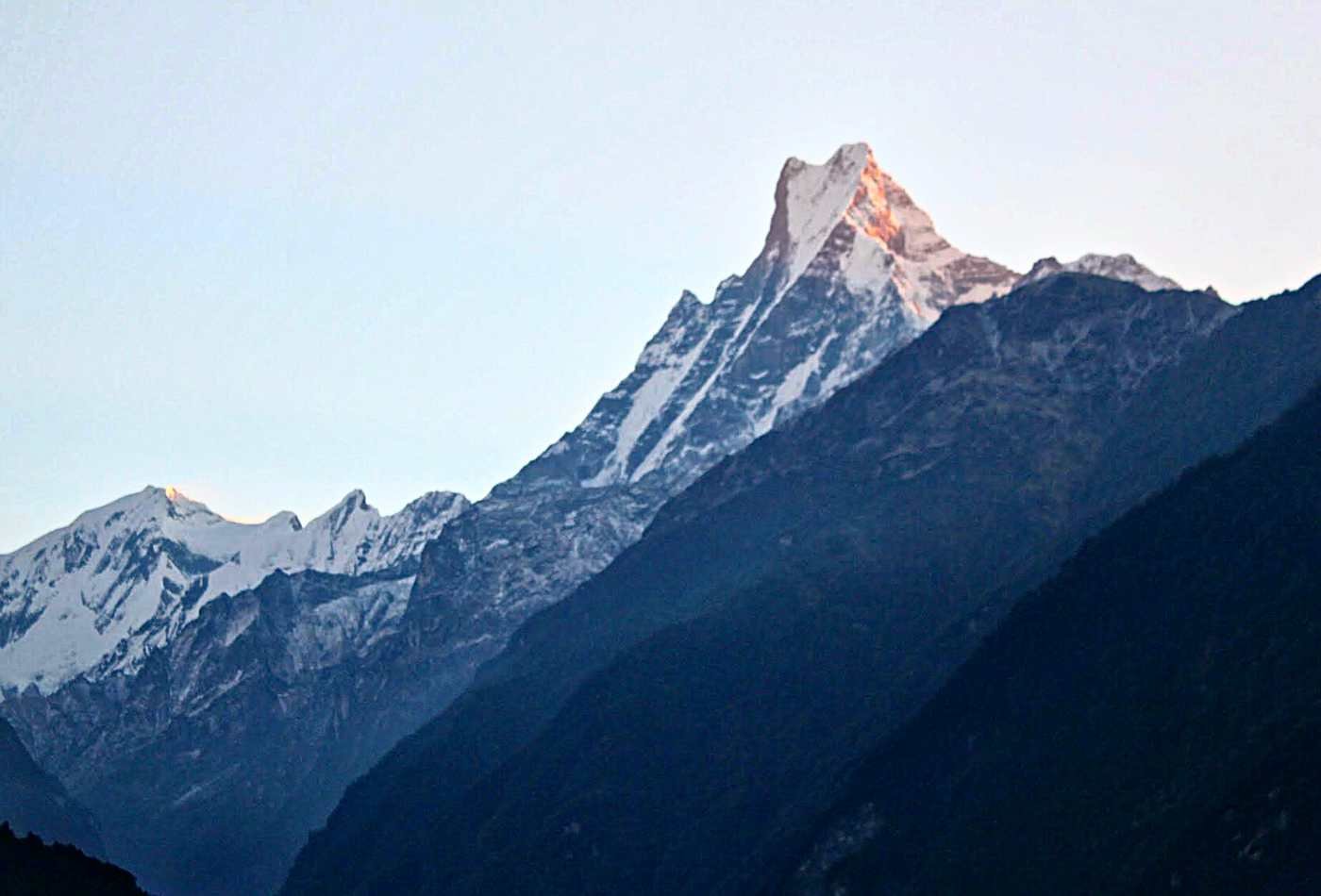
15 Days Annapurna Base Camp & Poon Hill Trek.
TRIP HIGHLIGHTS
- Tour Kathmandu and Pokhara, Nepal's Biggest Citys.
- Explore Buddhist Monasteries and Hindu Temples.
- Visit ancient cities and meet locals in villages.
- Discover the Nepal Highland Geography.
- Trekking in High Himalayas with Local Guide.
- Explore Buddhism and Hinduism in Nepal.
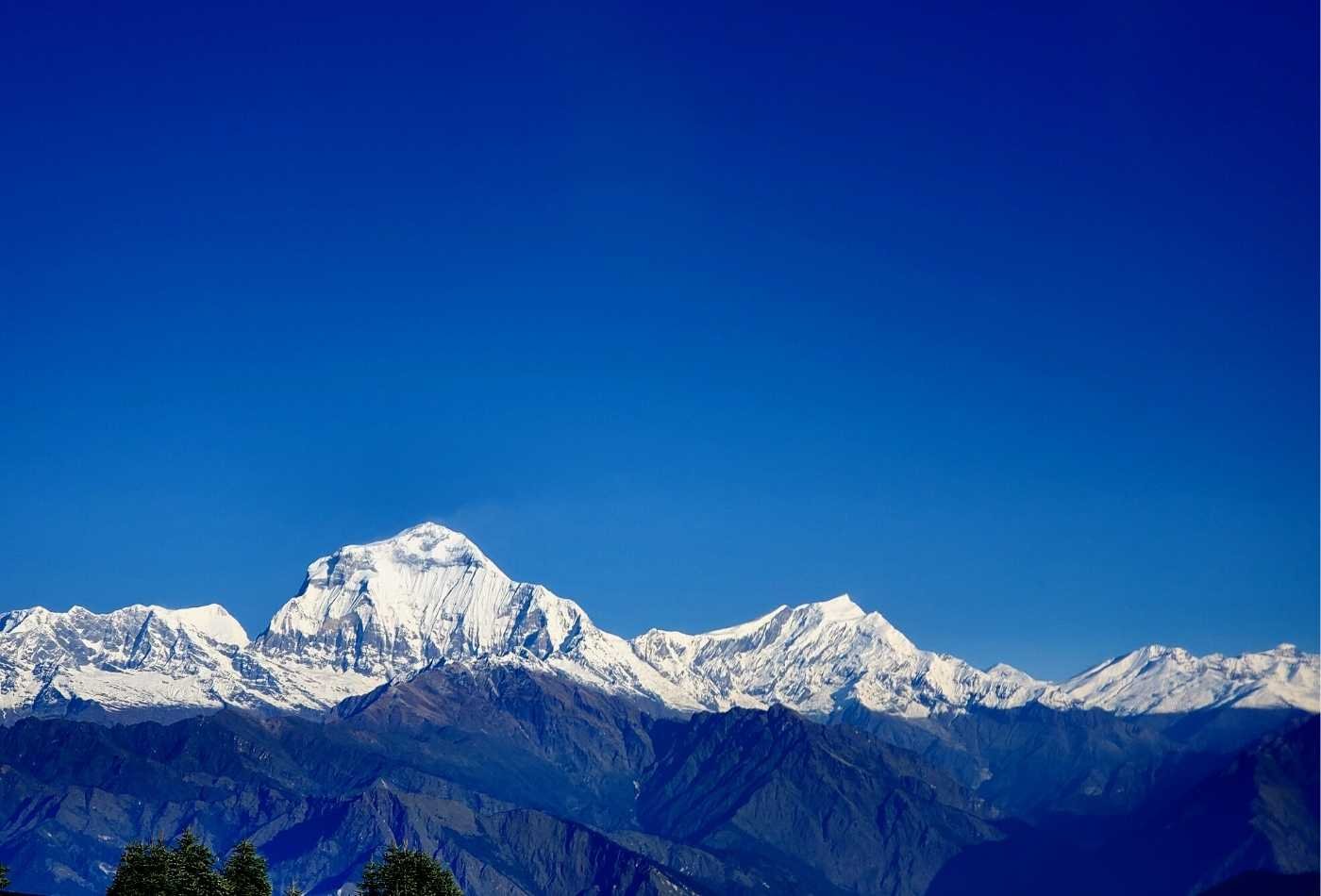
Return Guests get a 10% discount on all Trips!
-
Trip Type:
Sightseeing & Trekking.
-
Group Size:
1-12 People.
-
Best Time to Visit:
April/May and Sept/Oct
-
Max Altitude:
4,130 meters.
(13,550 ft.)
-
Start-End:
Kathmandu - Kathmandu.
-
Daily Activity:
Tour, Hiking & Drive.
Location:
Annapurna Conservation Area, Nepal.
- Fly into Tribhuvan International Airport (KTM)
DESCRIPTION
The trekking route leads to rice farms, bamboo, and rhododendron forest to end among glaciers and mighty peaks. Compared to other trekking, this route is easy and low altitude but offers you the best experience. A classic trek through ethnic Gurung and Magar villages helps you understand the culture and lifestyle of Nepal. With the joint effort of local people and government, Annapurna the sanctuary is a well-protected area for cultural heritage and natural beauty.
TRIP ITINERARY
DAY- 1: Arrive in Kathmandu.
Schedule your flight as your itinerary, and our trekking member will pick you up and drop in hotel. He will brief the next-day schedule.
Stay overnight in Kathmandu.
DAY- 2: Kathmandu Heritage tour and sightseeing.
As per the plan, our guide will pick up for city sightseeing. Three primary Kathmandu heritage
sites, Baudhanath, Pashupatinath, and Kathmandu Durbar-Square, are scheduled for this day.
Stay overnight in Kathmandu.
DAY- 3: Fly Kathmandu to Pokhara (822 M.) – 25 Minutes flight.
DAY- 4: Drive to Hile and trek to Ulleri – approx. 4 hour's walks.
After breakfast, we catch our jeep and are around a 2 -3 hour drive from Pokhara to Nayapul and Hile, where we begin our trek. Walking alongside the side of roads and rivers for a few hours, we stop at Tirkhedunga for lunch. After lunch and crossing the suspension bridge, we start a steep climb, approx—three hours to reach Ulleri.
Stay overnight in the Local Tea House.
DAY- 5: Ulleri to Ghorepani (2880 m.) – approx. 5 hour's walk.
Ascend to Ulleri Village through a pleasant rhododendron forest; at the beginning of April, you can see the blossom of rhododendron flowers. Crossing a small stream and bridge, we arrived at Ghorepani.
Stay overnight in the local Tea House.
DAY- 6: Climb Poon Hill and Trek to Tadapani (2630m.) - 5-6 hours’ trek).
Early morning around 4:30 AM, climb up Poon Hill for sunrise, back to Hotel for breakfast, and start trekking to Tadapani. Stay overnight in Tadapani Tea house.
Stay overnight in the Local Tea House.
DAY- 7: Trek Tadapani to Chhomrong (2170 m.) – Approx. 6 hours walk.
Today we will descend to Kimrong Khola before ascent again to Chomrong village, at the base of Hiunchuli Himal (6441 meters). There are breathtaking views of the Annapurna range and Macchhapucchhre from the village, plus the best time to take a shower before you trek to high altitude.
DAY- 8: Trek Chhomrong to Bambo0 (2310 m.) – approx. 5 hours.
The trail from Chhomrong descends to Chhomrong Khola and climbs steeply to Sinuwa, where we enter the Modi Khola Valley. From Sinuwa, the trail is straightforward on stone steps through the dense bamboo jungle; we arrive at Bamboo after a short descent.
Stay overnight in the Local Tea House.
Day- 9: Bamboo to Machhapuchhre Base Camp (3700 m.) - Approx. 11 km.
The day starts with a gently ascending through bamboo forests with varieties of rhododendron and oak trees. Continue ascent the narrow valley to Deurali. Walking along the west bank of the Modi River, enter an open valley before reaching Machhapuchhre Base Camp.
Stay Overnight in the Tea House.
Day- 10: Trek to Annapurna Base Camp (4130 m.)
Ascend further from Machhapuchhre Base Camp between the snowcap mountains for around 2 hours, now we are at Annapurna Base Camp, the highest point of your trek. The sunset and sunrise are genuinely fascinating in the base camp with surrounding mountains Machhapuchhare, Annapurna South, Annapurna Fang, Annapurna 1 and 3, Gangapurna, and Hiunchuli.
Stay Overnight in The Local Tea House.
Day- 11: Descend to Dovan (2505 M.) – 5- 6 hours’ walk.
Today we follow the same trail back to Machhapuchhre Base Camp and down to Deurali. It’s a long day of descent, but you have enough time to get there.
Stay Overnight in the Tea House.
Day- 12: Dovan to Jhinudanda (1780 m) – approx. 7 hour's walks.
The day starts with climbing up to Sinuwa, then we descend to the river and again ascend the stone steps to Chomrong. Steep descent on stone steps takes us to Jhinnudanda. Enjoying natural hot springs and local food for your last day in the mountains.
Stay overnight in The Local Guest House.
Day- 13: Walk to Motkyu Jeep Station and drive to Pokhara.
After crossing the highest suspension bridge in the Annapurna region, we walk for a few hours to Motkyu Jeep station, where our Jeep will pick up the group and drive to Pokhara. This drive takes around 3 hours from the jeep station to Pokhara. In the evening, walk around the Lake side.
Stay Overnight in Fishtail Lodge or Temple Tree.
Day- 14: Fly back to Kathmandu.
Fly back to Kathmandu. Good weather offers you an excellent view of the mountains—Check-in hotel, rest, and shop. Your guide will update you about the next day's schedule.
Stay Overnight in Hotel Tibet or Simillar.
Day-15: Final Departure.
Our office staff will drop you at the airport Three hours before the flight schedule.
TRIP DETAILS
WHAT'S INCLUDED
✅ 3 nights in Kathmandu and two nights in Pokhara 4 stars hotel. Tea houses on sharing basis during the trek.
✅ All listed transport and activities.
✅ Entry fees in a Heritage site in Kathmandu as per itinerary.
✅ Breakfast-Lunch-Dinner during Trekking.
✅ Trekking permit and national park fees.
✅ Trekking permit in Annapurna Conservation Area.
✅ Arrival and departure transfers.
✅ Experienced Trekking guide and other support staff.
✅ Flight ticket Kathmandu – Pokhara - Kathmandu.
✅ Proper Insurance for all local staff, including porters.
✅ Service Charge & Government Taxes.
WHAT'S NOT INCLUDED
❎ Personal Travel and Medical Insurances. (Travel insurance is compulsory for all travelers.)
❎ Personal Trekking Gear and Equipment.
❎ Tips and gratitude to the guide and driver.
❎ International flight tickets.
❎ Personal expenses, like laundry, phone calls, snacks & soft drinks.
❎ Lunch and Dinner during staying in Kathmandu and Pokhara.
❎ Extra cost occurs due to unforeseen circumstances during the trip, like flight cancellation and medical issues.
❎ Visa fees and vaccination. (Covid-19 vaccination is mandatory for all travelers.
WHAT GEAR TO BRING
Once you book this trek you’ll receive access to a printable, downloadable trip information packet with a detailed packing list.
FAQ
How do I sign up for a trip?
Reserving a trip is easy. Send us a note or call us at 734-997-7229 or contact us directly: Pem Dorjee Sherpa at 303-834-5512, info@imperialexpedition.com. Once we have received your information, we will send the trip application. Please complete and return these forms with your deposit of $500 for each person, which amount is applied toward the cost of your trip. Full payment is required if you sign up within 45 days of the trip’s departure. We recommend that you sign up as early as possible. The trip deposit is fully refundable until 90 days before departure, so there is no risk in reserving your space early. All prices quoted are in US dollars and are subject to change. All payments must be made in US dollars. We accept Visa®, MasterCard®, and American Express® as well as personal checks or PayPal. We are also open to creating trips on a first-come-first-serve basis. If there is a trip that you have an interest in particular dates that you have in mind, we will organize a trip just for you.
Once you have paid the deposit, we will finalize your itinerary and send information about health, culture, packing lists, and more to help you get ready. We can also help you find international flights to your destination. Full payment will be due about a month before departure. We will ask for a copy of your passport, a medical form, a release of liability form, an acknowledgment of terms and conditions, a copy of your flights, emergency evacuation insurance, etc. We will be available by phone and email to answer questions and help you organize your trip's details. We will pick you up at the airport and make all local arrangements abroad so that you can get the most out of this once-in-a-lifetime experience.
HOW FIT DO I NEED TO BE TO TREK IN THE HIMALAYAS?
You should be moderately fit, exercise regularly, and enjoy active vacations, walking, and hiking in mountainous terrain. For the Everest base camp trek, you should be able to run for an hour without stopping at any speed and still feel good to continue – OR – walk for 5-6 hours in a day with rests. Trekking is an endurance sport. Mostly you need a good attitude, which will go a long way toward the success of reaching your goal.
What is the best time to Trek in Annapurna Base Camp?
The popular time for the Annapurna circuit trek is Mid-March to Mid-May; this time is warm and the best time to see changing color of Nature. Another popular time is Mid-September to Mid-November, especially October, considered the best time to trek; during this time temperature is best for hiking. Annapurna circuit is open for all seasons, and you can do any season, but you must prepare as per the season and weather conditions in this region.
Should trekkers carry oxygen supplementary for Annapurna Base Camp Trek?
No, Annapurna Base Camp Trek is Moderate Trekking Trail, the maximum altitude during the trek is 4,130 meters or 13,550 feet. This attitude is not a risk zone for altitude sickness. Annapurna Base Camp trek trails are not over tree lines, so we don't require extra oxygen supplementary during Trek.
Can we shorten the trek day or itinerary?
Yes, you can shorten your trekking trip by driving; you can use a jeep to go directly to Manang, which is not recommended because of the possibility of high altitude sickness. However, you can take a jeep to Chame or Pisang to Start the trek. Another alternative is to take a helicopter to a certain point and start trekking.
Can we fly directly to Annapurna Base Camp?
Yes, We can get directly from Pokhara Airport to Annapurna base camp by Helicopter/Chopper. In the morning, we can take the chopper to Annapurna Base Camp for sightseeing and return to Pokhara after a short stop in Base Camp. Chopper cost depends upon the stayover in Base Camp and the number of people who sign up for the flight.
How big will the group be?
We try to bring together a small group of like-minded people. Our trekking groups generally range from 2 to a maximum of 12 members, although we can accommodate smaller groups. You can go for a solo trip to Mera peak though the cost is higher than joining the group.
How difficult is Annapurna Base Camp Trek?
Annapurna Base Camp Trek is a moderate trekking trail; this trek is suitable for all age groups of people and fitness-level hikers. The maximum altitude of the trek is 4,130 meters/10,550 feet, which is not a high trekking trail compared to another trekking trails in Nepal. Daily hiking distance is, on average, 8 Kilometers, and you can rest or stay overnight wherever suitable for you.
WHAT SORT OF EXPERIENCE DO YOUR GUIDES HAVE?
Our guides are dependable, competent, and highly qualified, with more than ten years of trekking experience, leading trips, treks, climbs, and expeditions in the Himalayas. Our guides speak English and the local language. We are trained in first aid and CPR. Most importantly, our guides are friendly and enjoyable and passionate about sharing Nepal's rich cultures, traditions, and natural beauty.
WHAT IS THE ROUTINE ON THE TREK?
Most trekkers start their day early, around 7:30 to 8:30 am, after a hot breakfast. The morning sun offers nice mountain views. You will carry a light pack for your camera, water, a jacket, and a wind layer. Around noon we will reach the lunch stop, where we will spend time drinking tea, resting, and having lunch. After lunch, we usually walk for 2 to 3 more hours before arriving, where we will stop for the evening. Here at the lodge, we will have hot tea and relax for the rest of the day. Our day ends with dinner, and then off to bed in single or double rooms in the trekking lodge.
What if I have to cancel?
If you decide to cancel your trip, the following fees apply and are due to Imperial Expedition prior to departure when we receive written notice of your cancellation. Cancellation Fee Schedule for tours and treks:
- 90-81 days prior to departure You forfeit half the deposit
- 80-60 days prior to departure You forfeit the deposit
- 59-31 days prior to departure You forfeit 50% of the total amount
- 30 or fewer days prior to departure You forfeit the entire cost of the trip
Cancellation Fee Schedule for Climbing Trips and Expeditions:
- 180-150 days prior to departure You forfeit
- 149-89 days prior to departure You forfeit 50% of the total amount
- 90 or fewer days prior to departure You forfeit the entire cost of the trip
HOW LONG DO WE WALK EACH DAY?
Our trips are classified into three categories according to the level of difficulty. Easy adventure treks are about a week to 10 days in duration. They generally don’t go above 13,000 feet (4,000m). You can expect hiking/walking for around 4-5 hours daily. Moderate to somewhat challenging treks are longer treks that go into a high mountain country above 13,000 feet (4,000m). Physically these trips are more demanding and tiring and may involve 6-8 hours of trekking along rocky trails in high Himalayan terrain. Strenuous treks are longer treks that go beyond the everyday activities of trekkers and tourists. These include ice climbing and mountaineering expeditions. Physically challenging, these trips may involve 7-9 hours of trekking in a day and are likely to include unfavorable weather conditions and strenuous activities. Some level of experience may be required for these trips.
Can we access the internet and use our cell phones during Trek?
Yes, you can activate your international roaming service before entering Nepal, which costs more expensive than your regular service at home. You can use WIFI in the Local Tea House, where you have to charge $2 to $5 to use WIFI, or you can buy a recharge card to use internet data. Specific locations may be out of connection by cell phone service and WIFI where we can use the satellite phone.
What happens in case of an emergency?
In the case of a serious illness or a life-threatening emergency during your trek, a helicopter rescue will be initiated. You are responsible for all the expenses incurred in such an evacuation. It is required that you have insurance that covers emergency helicopter evacuation throughout your trip. However unlikely, we are prepared for emergencies, and your guide will respond quickly to get any necessary medical help. We aim to avoid such circumstances with education and a large dose of preventative medicine.
Can I get a Nepal visa on arrival?
Custom Declaration on Kathmandu, Nepal Arrival (For Foreign Nationals)
1. Travelers must declare goods over permitted personal effects and duty-exempted consumable goods and restricted/prohibited goods and commercial goods at the red channel. Travelers possessing such goods may use the green channel.
2. Export or import narcotics, arms and explosives, wildlife and its products, and commercial goods are restricted/prohibited. Attempt to import or export such goods may lead to confiscation of goods, penalty, and arrest resulting in prosecution.
3. Travelers must declare foreign currency at the red channel if the sum exceeds US$2000 or equivalent.
4. Permitted used personal effects are as follows in condition to return at the time of departure:
1. Binocular one set.
2. Video Camera and still camera one set each.
3. Portable music system one set recorded media 10 pcs.
4. Cloths and goods of day-to-day use.
5. Perambulator and tricycle, one set each.
6. Bicycle one set.
7. Watch one piece.
8. Cellular mobile phone one set
9. Professional hand tools are one set for professional personnel.
5. Duty-exempted consumable goods are as follows:
1. Whiskey/wine not exceeding 1.15 liters or beer up to 12 cans.
2. Cigarettes 200 sticks, cigar 50 sticks, tobacco 250 grams.
3. Camera film up to 15 pcs and movie film 12 reels.
4. Readymade and can foods not exceeding NRs.1000.00.
5. Medicine not exceeding Nrs.1000.00.
6. Fresh fruits not exceeding NRs.1000.00
Is it possible to deviate from the itinerary?
Our specific itineraries are custom crafted with you in mind. Once we agree on a plan, we can make minor changes and adjustments en route. The itinerary acts as a general plan for the trip. However, there are often local events, festivals, and holidays that could affect or change our schedule. As long as everyone agrees on these changes, that is fine. Significant changes to the itinerary may be made if there are political or environmental concerns. Your guide will be able to help to make any necessary adjustments. Our trips are adventures that may take you into remote regions where unforeseen circumstances may contribute to the need for a change in the itinerary.
Do you have any suggestions on what to do and what not to do concerning the Nepalese culture?
-
The most common greeting in Nepal is “Namaste,” performed by placing the palms together and bowing as if praying.
-
Before entering a Nepalese home, temple or monastery, remember to remove your shoes and place them neatly side-by-side.
-
Be careful not to use your spoon, fork, or hands to touch another person’s food, plate, cooking utensils, or even the serving dish. Do not eat from other people’s plates, and do not drink from other people’s water bottles or glasses. This is considered to be impure by the Nepalese.
-
Never touch anything with your feet. The feet and the floor are considered dirty.
-
While traveling, please feel free to dress appropriately. Women should avoid short skirts and sleeveless shirts.
-
Seek permission before entering a Hindu temple. Many Hindu temples do not allow non-Hindus to enter.
-
Leather is prohibited inside temples because cows are considered sacred and are not used for slaughter.
-
Walking around temples or Buddhist stupas is traditionally done clockwise.
-
Ask before taking photographs of the locals. Some believe part of the soul is taken when a picture is snapped.
-
Public displays of affection between a man and a woman are frowned upon and are not generally accepted.
-
When the Nepalese shake their head from left to right, they may mean, “Yes.”
-
Develop a genuine interest in Nepal and meet and talk to the Nepalese people. Do your best to respect their local customs and traditions.
Payment methods.
What about transferring trips?
Tours and trekking trips may be transferred to the next year or another date; however, the transfer must be made 90 days or more before departure. Otherwise, if the transfer is made 90 days or less before departure, you must pay the cancellation fees outlined above. There are no extra fees for transferring trips more than 90 days before departure. However, for climbing trips and expeditions, if you would like to change our trip to the next year or different dates, an automatic transfer fee of $1,000 must be paid to Imperial Expedition.
Should I purchase trip cancellation insurance?
Suppose you must cancel your trip due to illness, injury, or death of yourself or an immediate family member, trip cancellation insurance protects all your deposits and payments for air and land costs. It is recommended that you buy trip cancellation insurance, but optional.
What if Of Imperial Expedition cancels my trip?
Imperial Expedition reserves the right to cancel all or a portion of a trip due to political or environmental circumstances which may hinder trip operations or for other reasons beyond our control. In case of such a cancellation, we will give a full refund for the cost of the trip. However, Imperial Expedition is not responsible for additional expenses incurred by you in preparing for the trip, visa fees, gear, insurance, or medical expenses prior to the trip. The airline's refund policy applies if international air tickets have been purchased.
What other expenses should I consider?
Medical advice and inoculations, health and travel insurance, travel and trekking gear, international airfare, Nepali visas, airport tax, spending money, and most meals are not included in the cost of your trip.
How much should I budget for tipping?
Your support team will work hard to please you during your trip. They will appreciate receiving a tip at the end of their service. The amount you give depends on you and your appreciation of their work. We recommend giving tips from $200 – $300 to your porters.
Electricity in Nepal
Residential electrical outlets in some countries, including the United States, use 110-120 volts of electricity and accept certain plugs. Many other countries, including Nepal, use 220-240 volts to power their appliances and different plugs. If you try to plug an American device, such as a shaver or hair dryer, into an outlet of a different voltage, you may destroy the appliance and cause yourself injury. Before you travel, you should know a few things about other countries (like Nepal).
Contact Us
Related Trips
